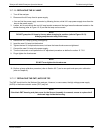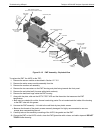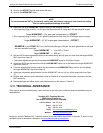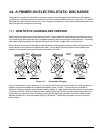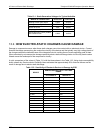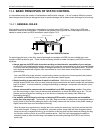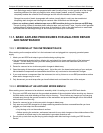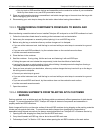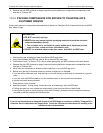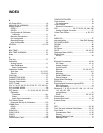
A Primer on Electro-Static Discharge Teledyne API M100E Analyzer Operation Manual
296
Table 13-1: Static Generation Voltages for Typical Activities
MEANS OF GENERATION 65-90% RH 10-25% RH
Walking across nylon carpet 1,500V 35,000V
Walking across vinyl tile 250V 12,000V
Worker at bench 100V 6,000V
Poly bag picked up from bench 1,200V 20,000V
Moving around in a chair padded
with urethane foam
1,500V 18,000V
13.2. HOW ELECTRO-STATIC CHARGES CAUSE DAMAGE
Damage to components occurs when these static charges come into contact with an electronic device. Current
flows as the charge moves along the conductive circuitry of the device and the typically very high voltage levels of
the charge overheat the delicate traces of the integrated circuits, melting them or even vaporizing parts of them.
When examined by microscope the damage caused by electro-static discharge looks a lot like tiny bomb craters
littered across the landscape of the component’s circuitry.
A quick comparison of the values in Table 13-1 with the those shown in the Table 13-2, listing device susceptibility
levels
, s
hows why Semiconductor Reliability News estimates that approximately 60% of device failures are the
result of damage due to electro-static discharge.
Table 13-2: Sensitivity of Electronic Devices to Damage by ESD
DAMAGE SUSCEPTIBILITY VOLTAGE
RANGE
DEVICE
DAMAGE BEGINS
OCCURRING AT
CATASTROPHIC
DAMAGE AT
MOSFET 10 100
VMOS 30 1800
NMOS 60 100
GaAsFET 60 2000
EPROM 100 100
JFET 140 7000
SAW 150 500
Op-AMP 190 2500
CMOS 200 3000
Schottky Diodes 300 2500
Film Resistors 300 3000
This Film Resistors 300 7000
ECL 500 500
SCR 500 1000
Schottky TTL 500 2500
04515F DCN6048




